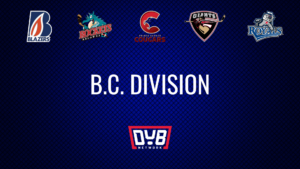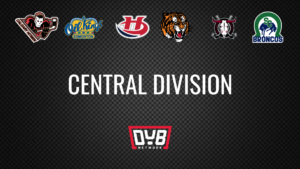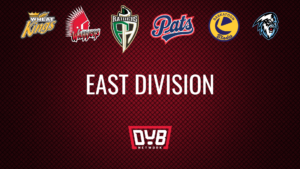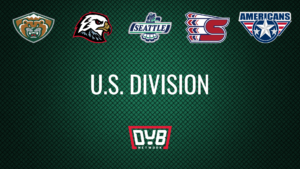Alberta’s green light to a new WHL season in the province is great news. Soon, we’ll be able to watch the five Alberta-based WHL squads battle for the Ed Chynoweth Cup that we missed last year.
But, what about the rest of the league?
Now, don’t get me wrong, this is an important first step, but it would be hard to justify only five teams being given the chance to play. For the teams in the WHL’s East Division, they can’t even travel in and out of Manitoba without a 14-day quarantine. With these new restrictions, travel simply isn’t feasible for the East Division.
In this case, a bubble is the best way to go, and, in my opinion, no city is better equipped to handle it than Winnipeg.
How the season would work
The Swift Current Broncos are joining the East Division this season. That means all the Saskatchewan teams will stay together. This gives us a seven-team bubble, a little over half the number we saw in the Edmonton NHL bubble.
A seven-team division also makes creating the schedule much easier. Each team would play one another four times to fit the 24-game slate. This way, there doesn’t have to be an imbalance, keeping the season fair for everyone.
It also makes it easy to keep teams as distanced as possible – every team plays two games a weekend, with one team getting a bye-week. These bye-weeks would allow for flexibility in the event of any positive COVID tests and give players time to recover from injuries.
As for where to play, finding a rink in Winnipeg isn’t a challenge, but a rink that could host seven teams is trickier. The top choice would be the Bell MTS Iceplex. It has four rinks so teams could run practices away from each other and games could be played on different ice sheets in case one has to be closed off. There’s also a nice pro shop there, so teams have easy access to any sticks, skate sharpening, or other things players need to be game ready. There’s also a spacious, well-equipped gym perfect for dryland training.
However, this rink also hosts the Manitoba Moose practices. The AHL does have its teams travel, but they’re under tight rules to keep their ship sailing. Further compounding this, the Moose still haven’t released their schedule, making booking around them right now impossible. The WHL and AHL would have to come to an agreement for this rink to be used. A “you stay there and we’ll stay here” may sound simple, but it could be hard to execute. However, everything is hard these days, and getting the guys back on the ice is worth the work.
If the Iceplex wouldn’t work, there are other options like the Seven Oaks Arena near downtown, the Max Bell Centre where the Winnipeg ICE play their home games, and the RINK training centre which, while farther out, also has extra amenities including a gym for dryland training. Winnipeg offers the most high-end facilities of the East Division cities to play a season.
What about off the ice?
Being able to play a season is great, but the players and staff would also need a place to live. They’ll also need healthy food to keep them going along with entertainment and amenities to keep them mentally fresh. All of that takes money – lots of money.
Billet families can help support the financial burden, but good luck finding 200-plus families willing to buy the extra food and other things needed to support them in a pandemic. Also, the WHL likely wouldn’t be too keen on all the potential COVID contacts that could be made through the billet families, and young players not under any supervision is asking for trouble.
Hotels present the best option for a smooth Winnipeg bubble. Teams can easily isolate in the event of a breakout, all food/equipment could be sent to one place, and teams could be picked up and dropped off with a single bus rather than all driving themselves.
We’ve seen with the NHL, NBA, and MLB that hotels are the best way to keep everyone safe and make sure no one risks that safety. It’s the only method that’s been tested, and the test was passed with a championship in all three leagues.
Winnipeg may not have had the hotels for the NHL, but they certainly have enough to cover seven WHL teams. If needed, each team could stay in their own hotel, which would reduce cross-team contamination. They wouldn’t be up in the Fairmont, but Winnipeg has enough nice hotels in different areas of the city to cover for the East Division. Once the rink is selected, the WHL could pick the closest quality hotels.
The Winnipeg hotel industry would likely be willing, and there are lots of quality restaurants that could cater to the teams. The money influx into Winnipeg’s economy would be enticing to the city, but it’s also the biggest drawback to hotels for the WHL.
DUBNetwork’s own Adam Kierszenblat looked over what it would take to run a bubble (albeit for the whole WHL). Unsurprisingly, it’d be expensive.
Kierszenblat’s research showed teams would be looking at over $60,000 (before tax) in hotel expenses alone. Multiplied by seven, the total comes out to $420,000, a little under the value of some Junior A teams.
This isn’t the NHL (who spent $75-90 million dollars on their bubble). There are WHL teams that would have a hard time affording the bubble, especially with virtually no incoming revenue.
It would likely take help from the government to run the bubble smoothly, so some level of financial support would have to be negotiated. Money’s tight, so both sides would need to be willing to compromise. Hotels present the best chance for a successful bubble, and Winnipeg offers quality hotels for the WHL to choose from so their teams can safely play.
Staying sane
Two months in a hotel is tough on anyone, never mind teenagers. They would probably all be willing to do it (and for those that wouldn’t, the WHL could set an opt-out date), but the midseason days could be hard to handle.
Some of the guys would have remote school to distract them, but that’s not exactly fun. There need to be things unrelated to hockey and school for when they need a break.
Obviously, people can bring their own books, video games, movies, and more in, but that only works for so long. They’ll need more.
One idea would be to see if the WHL could get local Winnipeg businesses to build ways to help them pass the time. For example, the NHL bubble had a virtual driving range become one of the most popular parts of the bubble. The WHL and community could collaborate with the players and staff to find things they’d enjoy.
Anything’s better than nothing
The only option the WHL shouldn’t consider for this year’s season is canceling the campaign. The irreparable damage it would do to teams and players cannot be quantified. A bubble gives the WHL a way to safely place, and Winnipeg offers the best place for the East Division to play.
There are ways to make people enjoy, or at least tolerate, the bubble, but it’ll take creativity and cooperation from the WHL and Winnipeg to work.




